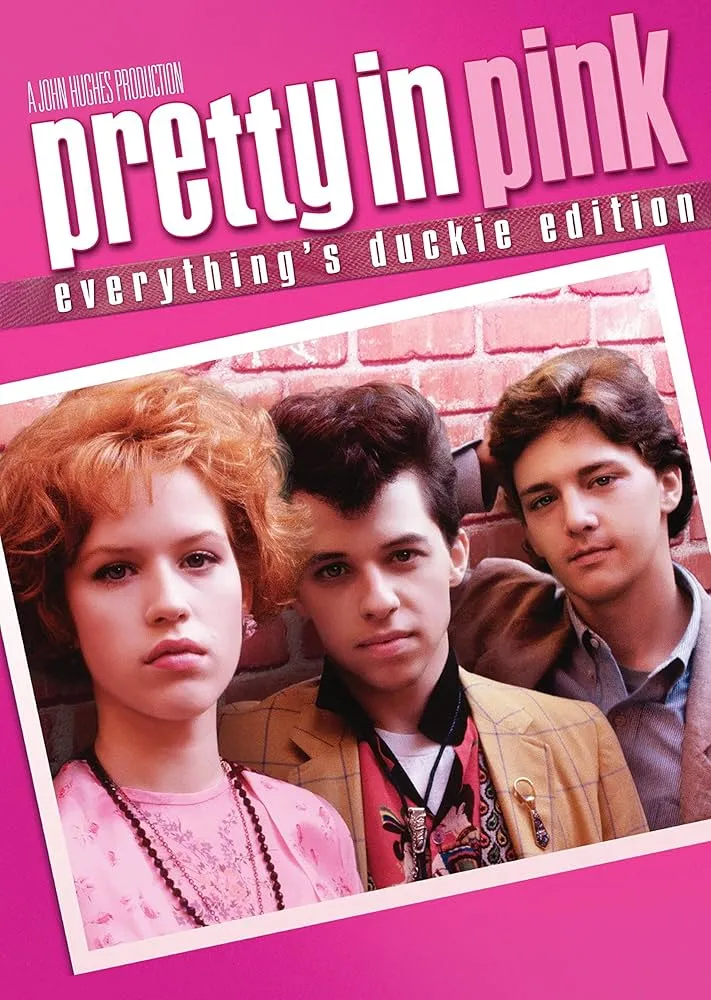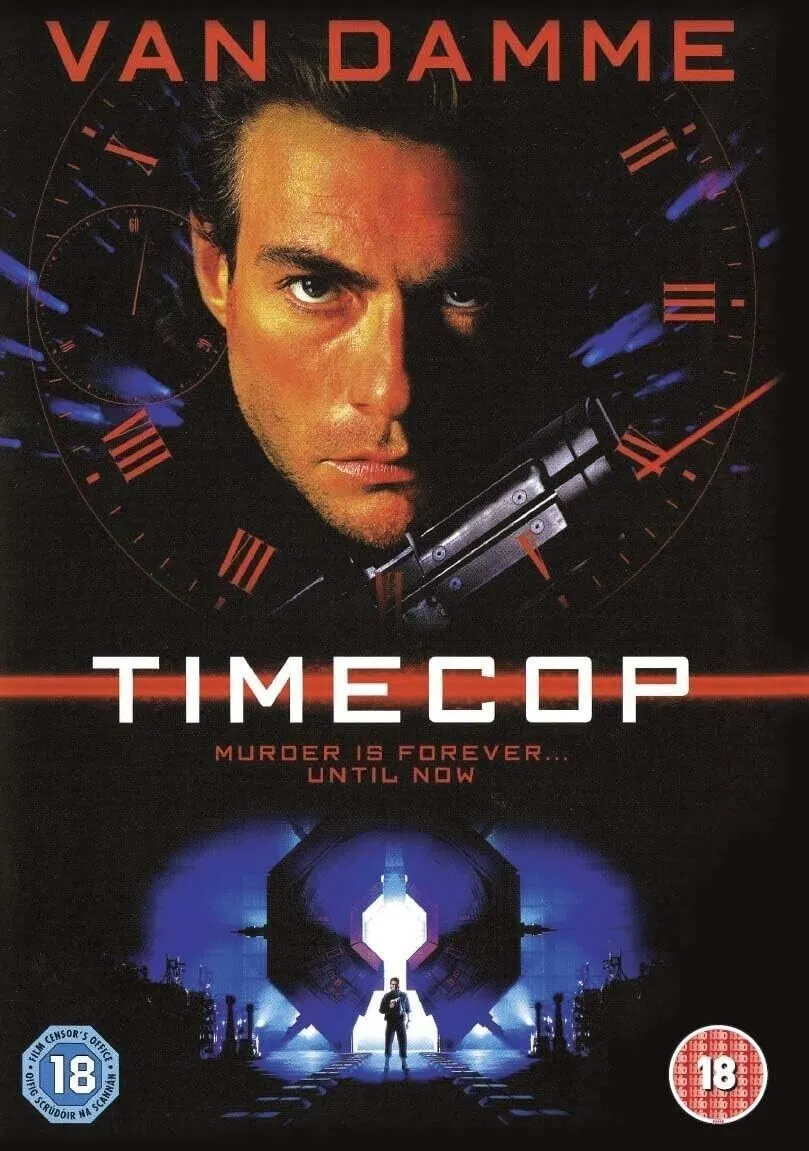Pretty in Pink (1986)
Pretty in Pink (1986), directed by Howard Deutch and written by John Hughes, is an iconic teen romantic comedy-drama that became a defining film of the 1980s. With its exploration of teenage angst, social class, and love, it continues to resonate with audiences even decades after its release. The film stars Molly Ringwald as Andie Walsh, a quirky high school senior from a working-class background who finds herself caught in the crosshairs of love, friendship, and social expectations. The film features a love triangle between Andie, the wealthy and charming Blane McDonough (Andrew McCarthy), and her best friend, the eccentric and unrequitedly in love Duckie Dale (Jon Cryer). At its heart, Pretty in Pink is a story of personal growth, love overcoming social barriers, and the complexities of high school relationships.

The story begins with Andie Walsh, a teenage girl who stands out for her unique sense of style and individuality. Living with her father, Jack (Harry Dean Stanton), after her mother’s departure, Andie has grown up without much financial security, yet she remains independent, creative, and passionate about fashion. Her life becomes complicated when she develops feelings for Blane, a popular and rich student at her high school. Blane is immediately drawn to Andie, not only for her beauty but also for her nonconformist attitude, which intrigues him in a way that his social circle cannot understand. However, their connection faces significant challenges due to their different social backgrounds. Blane’s friends, particularly the snobbish Steff (James Spader), ridicule him for being interested in someone from a lower class. Steff, who represents the elitism and materialism of the rich clique, looks down on Andie and pressures Blane to abandon her. This creates a conflict within Blane, as he must choose between the expectations of his social group and his authentic feelings for Andie.
At the same time, Andie’s best friend Duckie, who has been a constant and supportive presence in her life, harbors deep, unspoken feelings for her. Duckie, played by Jon Cryer, is the quirky, fun-loving character whose comic antics and infectious personality provide both levity and depth to the film. He openly loves Andie, but she doesn’t see him in a romantic light. Though Duckie’s affections for her are unreturned, he remains a loyal friend, offering his support even when it hurts to see her pursue a relationship with Blane. Duckie’s feelings for Andie bring emotional complexity to the film, adding tension to the dynamics between him, Andie, and Blane. His unrequited love also highlights the difficulties of balancing friendship with romantic desires, making him a relatable character for many viewers.
As Andie’s relationship with Blane develops, she becomes increasingly conflicted. The external pressures of social class, coupled with Blane’s hesitation to fully embrace their relationship because of the judgment from his peers, cause Andie to question her worth and her place in the world. She struggles with feelings of rejection and insecurity, wondering if she is truly good enough for Blane. As the film progresses, Andie begins to realize that her self-worth is not defined by the opinions of others, and that being true to herself is more important than trying to fit into a particular social mold. Blane, too, is caught in a web of conflicting emotions, torn between his desire to be with Andie and the societal pressure to conform. His indecisiveness causes friction in their relationship, leading Andie to question whether she should continue investing in someone who cannot fully commit to her.
The central conflict of the film revolves around the challenges posed by social class and the expectations that come with it. Blane's internal battle represents the pressure placed on teenagers to conform to the norms of their social circle, while Andie’s struggle reflects the emotional toll that such expectations can have on self-esteem. Pretty in Pink also explores the emotional complexities of friendship, particularly through Duckie’s perspective. Although he yearns for a romantic relationship with Andie, his love for her remains pure and selfless, and he ultimately supports her decision, even when it means letting her go. In the final act, Blane realizes that his feelings for Andie are stronger than his desire to fit in with his peers. In a defining moment, Blane chooses to reject the influence of his friends and publicly declares his love for Andie at the high school prom. This gesture signifies his willingness to embrace a relationship based on genuine affection rather than social status. The film concludes with Andie and Blane sharing a romantic kiss, symbolizing the triumph of love and authenticity over social pressures. Duckie, too, has a moment of self-empowerment when he finally accepts that he deserves someone who will love him for who he is. The film ends on a positive note, suggesting that both Andie and Duckie are on the path to personal fulfillment and emotional growth, despite the challenges they’ve faced.

Pretty in Pink is much more than just a love story; it is a film that tackles themes of identity, belonging, and self-acceptance. The movie stands as a reflection of the struggles faced by teenagers in the 1980s, many of whom dealt with the complexities of social hierarchies, peer pressure, and the search for love and validation. The film’s portrayal of Andie’s growth, from someone who initially doubts her own worth to someone who learns to value herself, is both empowering and inspiring. Molly Ringwald’s portrayal of Andie Walsh captures the essence of teenage vulnerability, while also showcasing the character’s strength and determination. Jon Cryer’s portrayal of Duckie adds layers of humor and emotional depth, making him a standout character in the film. His friendship with Andie, though complicated by his romantic feelings, is one of the most heartfelt aspects of the film.
The soundtrack of Pretty in Pink is another notable feature, with songs by artists like The Psychedelic Furs, OMD, and Suzanne Vega, which capture the mood of the era and elevate the emotional tone of the film. The music becomes a crucial element in shaping the film’s nostalgic and timeless appeal. In conclusion, Pretty in Pink remains a beloved classic of 1980s cinema. It’s a film that not only entertains but also offers valuable lessons about love, friendship, self-worth, and the power of staying true to oneself. The film’s lasting impact can be seen in its continued popularity among fans of all ages, and it remains a poignant reminder that, while social pressures may try to define us, it is ultimately our authenticity and individuality that lead us to the most meaningful relationships and personal happiness.


-1742435712-q80.webp)
-1739242437-q80.webp)
